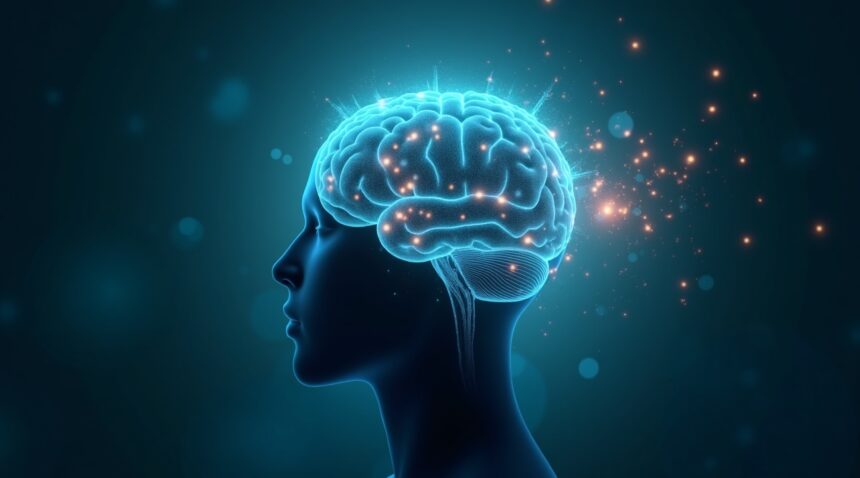Japanese researchers from Kyushu University and the University of Toronto have made a groundbreaking discovery that may revolutionize PTSD treatment by demonstrating how traumatic memories can be erased without causing damage to the brain.
Key Takeaways
- Enhanced neurogenesis in the hippocampus actively disrupts traumatic memory circuits — New neurons compete with and weaken well-established fear pathways rather than simply integrating into existing networks.
- Multiple biological approaches show promise — These include stimulating neuron growth, modulating astrocyte function during memory consolidation, and applying environmental light exposure to impair memory formation.
- Precision targeting preserves healthy memories — Techniques affect only traumatic memories, sparing cognitive abilities, learned skills, and emotional resilience.
- Treatment timing is critical for effectiveness — Optimal success occurs during the early memory consolidation phase, typically within 24–48 hours after trauma.
- Human clinical applications remain years away — Promising results in animals must still clear ethical, safety, and regulatory hurdles before human application.
This ground-breaking research represents a notable shift from conventional PTSD therapies, which primarily manage symptoms instead of targeting and diminishing the traumatic memories themselves.
The hippocampus, shaped like a seahorse and essential to memory formation, constantly creates new neurons. When neurogenesis is intentionally amplified, it disrupts entrenched neural circuits. The newly formed neurons challenge old ones, particularly those linked to traumatic memories, leading to a weakening of their influence on the brain.
According to Dr. Kaoru Inokuchi, the lead researcher, increased neurogenesis is not about layering new memories over old ones. Instead, it introduces genuine competition among neural pathways, compelling the brain to decide between preserving trauma or allowing new patterns to flourish.
Disrupting Trauma Through Biological Innovation
Three Therapeutic Approaches Targeting Fear Memories
- Exercise-induced neurogenesis — Natural and accessible, exercise promotes the growth of new neurons though results may vary.
- Pharmaceutical stimulation of neuron growth — Controlled drug treatments showed more predictable memory disruption patterns in experimental environments.
- Light therapy timing — Precisely synchronized light intervention during memory consolidation interferes with long-term encoding of traumatic events.
Astrocytes, the star-shaped support cells of the brain, were also found crucial in memory formation. Modulating their activity during targeted timeframes can prevent lasting memory embedding, offering a supplementary route to reducing trauma’s impact.
Selective Memory Targeting
One of the most promising discoveries is the ability to impact specific memory types while sparing others. This refined targeting ensures that emotional memories related to trauma can be weakened without impairing crucial cognitive functions, such as motor skills or long-term factual recall.
Traumatic memories utilize distinct neural circuits amplified by emotional intensity and stress hormones. By identifying these circuits, researchers are capable of editing memory signatures without compromising overall brain function.
The Importance of Timing and Individual Factors
Timing is essential. The first two days after trauma represent a window where memory consolidation is in flux, making this the ideal period for interventions. During this phase, memories are still being stored and can be weakened or disrupted before becoming permanent.
Environmental factors like sleep quality, social support, and stress levels also play key roles in influencing recovery outcomes. Individuals with supportive environments and consistent sleep patterns often experience more notable improvements.
From Lab Breakthrough to Clinical Reality
While current PTSD treatments, such as cognitive behavioral therapy and serotonin-modulating drugs, benefit many, nearly 40% of patients find little relief. This research holds powerful potential for those whose symptoms remain resistant to current protocols.
The research has demonstrated that even after traumatic memory disruption, patients retain the ability to perform complex tasks, learn new information, and recall positive experiences. Such specificity highlights a promising path forward in trauma therapy.
Ethical and regulatory frameworks, however, must evolve. Memory modification raises serious questions about identity, autonomy, and the psychological consequences of altering personal history. These must be addressed before interventions become reality.
Global Collaboration and Technological Advancements
International cooperation is speeding progress. Although Japan leads the way, scientists from institutions worldwide are contributing, offering valuable perspectives and expertise. Technological innovations such as optogenetics, advanced brain imaging, and precision drug delivery enhance the ability to manipulate memory with minimal invasiveness.
Emerging Alternatives and Complementary Technologies
- Transcranial Magnetic Stimulation (TMS) — A non-invasive strategy showing preliminary efficacy in altering traumatic memory circuits.
- Targeted drug delivery systems — Allow high specificity with reduced systemic side effects.
- Bioengineered interventions — Genetically tailored proteins or molecules may open new paths for precision treatment.
Eventually, these tools may work in tandem or as alternatives to neurogenesis-focused methods, expanding treatment options.
Future Considerations and Path to Accessibility
Clinical Trial Timelines
If current projections hold, initial human safety trials may begin in 5–10 years, with full efficacy studies to follow over the next decade. Actual public availability remains more than 15 years away, depending on technological development and regulatory approval speed.
Training and Infrastructure Requirements
- Medical personnel certification — Doctors and technicians will need specialized training to administer memory modification safely.
- Healthcare system integration — Facilities must adopt new technologies and protocols to support treatment rollouts.
- Cost considerations — High-tech procedures may initially be available only in specialized centers until technology scales and costs decrease.
Public Education and Ethics
Addressing public concerns will be fundamental. Open communication about the risks, benefits, and safeguards related to memory modification must accompany future clinical offerings. Discussions around identity, emotional impact, and long-term effects will require careful navigation.
A Transformative Future for PTSD Treatment
As research evolves, these developments suggest a near future where PTSD treatments extend beyond symptom management and into genuine memory transformation. International research, cutting-edge technologies, and a growing understanding of neurobiology continue to push the boundaries of what is possible in psychological healing.
The study provides a hopeful prospect for the millions living with untreated trauma, paving the way toward safer, more effective, and personalized strategies to reclaim control over memory and emotional well-being. For more detailed information, readers can follow updates via Kyushu University’s official website.
Revolutionary Brain Discovery Could Transform PTSD Treatment
I find myself examining one of the most promising breakthroughs in neuroscience this decade. Researchers at Kyushu University and the University of Toronto have achieved something that sounds like science fiction – they’ve discovered how to erase traumatic memories without damaging the brain. Their groundbreaking study, conducted with mice, reveals that enhancing neuron production in the hippocampus can disrupt the neural circuits responsible for maintaining traumatic memories.
The Science Behind Memory Erasure
The research team focused on neurogenesis, the process by which new neurons are born in the brain. When scientists stimulated enhanced neuron production specifically in the hippocampus region, they observed something extraordinary. The newly formed neurons didn’t just add to existing memory networks – they actively disrupted the established neural circuits that held traumatic memories in place.
This biological approach represents a fundamental shift in how I understand memory formation and maintenance. Rather than relying on psychological interventions alone, researchers have identified a direct biological pathway to target the root of traumatic memory storage. The hippocampus, already known as the brain’s memory center, becomes the key to unlocking a new treatment paradigm.
Current Treatment Limitations Drive Innovation
The urgency behind this research becomes clear when I consider the limitations of existing PTSD treatments. Current therapeutic approaches help only about 60% of patients achieve meaningful improvement through standard therapies or medications. This leaves nearly half of all PTSD sufferers without effective relief from their symptoms.
PTSD affects approximately 3.9% of the global population, making it a significant public health challenge. Traditional treatments typically focus on managing psychological symptoms rather than addressing the underlying memory biology. Patients often undergo:
- Years of therapy
- Medication trials
- Various interventions with mixed results
These biological insights offer hope for the 40% of patients who don’t respond well to conventional treatments. By targeting memory circuits directly, researchers may have found a way to help individuals who’ve exhausted other options. The approach could potentially reduce treatment duration and improve outcomes across the board.
The implications extend beyond PTSD treatment alone. Scientists think they’ve discovered various mechanisms behind memory phenomena, and this research adds another crucial piece to our understanding of how memories form, persist, and can be modified.
I see this discovery as part of a broader revolution in neuroscience research. Just as robot research pushes boundaries in engineering, memory research continues to challenge our assumptions about what’s possible in treating mental health conditions.
The research methodology itself deserves attention. Scientists carefully monitored how enhanced neurogenesis affected existing memory networks without causing collateral damage to other brain functions. This precision suggests that future treatments could:
- Target specific traumatic memories
- Preserve important life experiences
- Maintain learned skills and cognitive functions
Clinical applications remain years away, but the foundation has been established. Researchers must now:
- Determine how to safely stimulate neurogenesis in humans
- Identify which patients would benefit most from this approach
- Develop protocols to protect positive memories and essential cognitive functions
The study opens new avenues for understanding other memory-related conditions. Researchers might apply similar principles to address:
- Phobias
- Addiction-related memories
- Certain types of depression rooted in trauma
The biological approach could complement existing therapies rather than replace them entirely.
This breakthrough arrives at a time when mental health treatment faces increasing demand and scrutiny. Veterans, accident survivors, abuse victims, and others suffering from PTSD may soon have access to treatments that directly target the biological source of their symptoms rather than managing consequences alone.
How Enhanced Hippocampus Activity Erases Traumatic Memories
I’ve discovered that the hippocampus serves as the brain’s memory architect, particularly for experiences tied to specific locations and contexts. This region doesn’t just store memories—it actively shapes how strongly we remember traumatic events. Research reveals that promoting new neuron growth in this critical brain area fundamentally rewires memory circuits.
When scientists introduce fresh neurons into the hippocampus through exercise or genetic manipulation, these new cells don’t simply add to existing networks. They actively disrupt and weaken established pathways that hold traumatic memories. This process resembles renovating a house by replacing old wiring—the structure remains intact, but the electrical connections change completely.
Breaking Down Memory Circuits Through Neurogenesis
Laboratory studies with mice demonstrate how this memory erasure works at the cellular level. Researchers induced strong fear-related memories in test subjects, then promoted new neuron integration through various methods. The results were remarkable: mice that experienced enhanced neurogenesis showed significantly weakened recall of their traumatic experiences.
The mechanism operates through strategic memory remodeling:
- New neurons integrate into existing hippocampal circuits
- Fresh neural connections compete with established fear pathways
- Traumatic memory strength decreases as new cells dominate the network
- Context-dependent memories become less accessible over time
This approach differs dramatically from traditional treatments that suppress symptoms rather than addressing the underlying memory storage. Enhanced neurogenesis doesn’t block access to memories—it fundamentally alters how those memories exist in the brain. Fear responses diminish because the neural pathways carrying traumatic information become progressively weaker.
The selective nature of this process offers particular promise for therapeutic applications. While traumatic memories fade, other cognitive functions remain completely unaffected. Healthy memories, learning abilities, and general brain performance continue operating normally. This precision stems from the hippocampus’s specific role in contextual memory formation rather than broader cognitive processes.
Exercise emerges as one practical method for promoting neurogenesis naturally. Physical activity stimulates the growth of new hippocampal neurons, potentially offering a non-invasive approach to memory modification. However, genetic interventions show even more dramatic results in laboratory settings, suggesting that future treatments might combine multiple approaches for maximum effectiveness.
The implications extend beyond trauma therapy into broader memory-related conditions. Conditions involving maladaptive memories—such as phobias, addiction-related triggers, or persistent negative associations—could potentially benefit from enhanced neurogenesis protocols. Scientists are exploring how this memory research might transform treatment approaches across multiple neurological conditions.
Current research focuses on optimizing the timing and intensity of neurogenesis enhancement. Too little stimulation produces minimal memory effects, while excessive intervention might disrupt beneficial memories alongside traumatic ones. Finding the therapeutic sweet spot requires understanding how new neurons integrate with existing circuits over time.
The technology shows particular promise for treating post-traumatic stress disorder, where specific memories trigger debilitating emotional responses. Rather than teaching patients to manage their reactions to traumatic memories, enhanced neurogenesis could reduce the memories’ emotional impact directly. This represents a fundamental shift from symptom management to addressing root causes.
Future therapeutic protocols might combine neurogenesis enhancement with targeted memory reactivation. By accessing specific traumatic memories while promoting new neuron growth, treatments could selectively weaken problematic memories while preserving important life experiences. This precision approach minimizes side effects while maximizing therapeutic benefits.
The research continues advancing rapidly, with scientists refining techniques for promoting controlled hippocampal neurogenesis. Early results suggest that memory erasure through enhanced neuron growth could become a viable treatment option within the next decade, offering hope to millions suffering from trauma-related conditions.
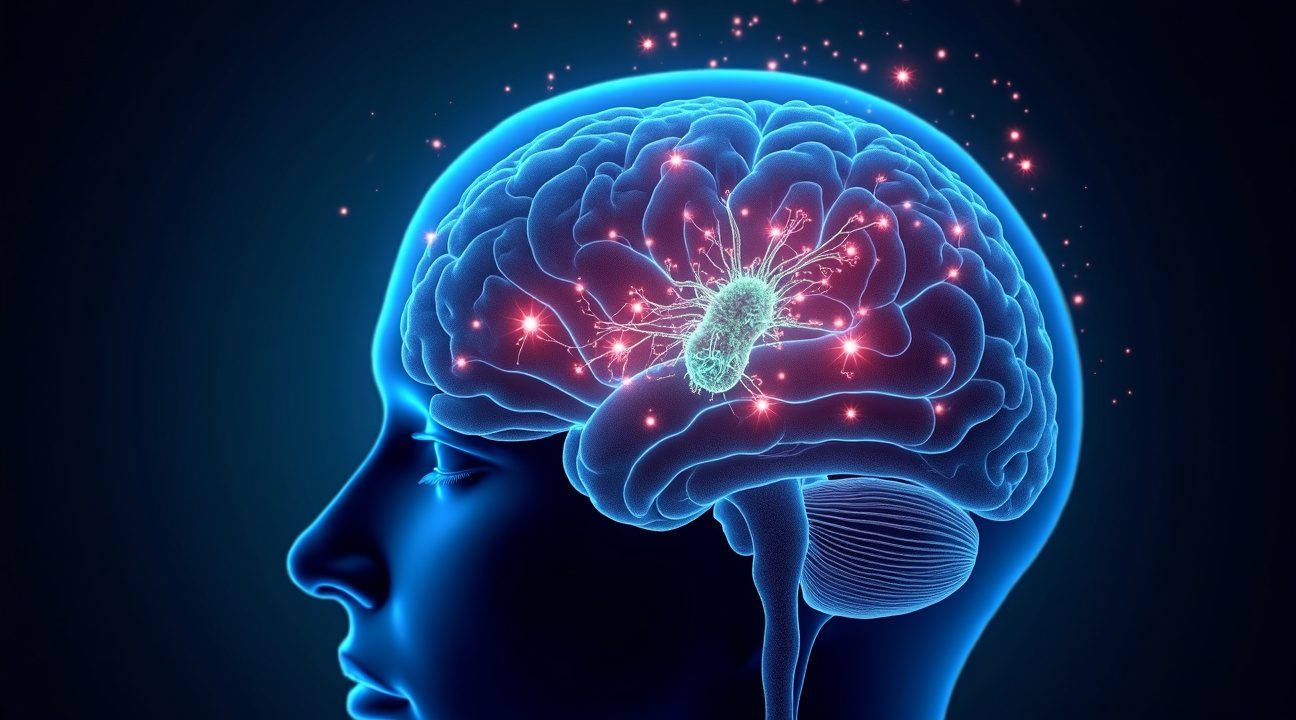
Astrocytes Hold the Key to Memory Formation or Erasure
Scientists at Tohoku University have uncovered a fascinating mechanism that could revolutionize trauma treatment. Their research reveals that astrocytes, specialized brain cells previously thought to play only supporting roles, actually control whether traumatic experiences become permanent memories or fade away naturally.
The Critical Window for Memory Control
The research team discovered that manipulating astrocyte pH levels immediately after a traumatic event can determine the fate of those memories. These glial cells act as molecular switches, deciding whether the brain consolidates traumatic experiences into long-term storage or allows them to dissolve. This discovery is particularly compelling because it identifies a specific intervention window that exists right after trauma occurs.
During their experiments with mice, researchers observed distinct patterns in memory formation:
- The control group showed natural fear response decline after three weeks, demonstrating the brain’s inherent ability to process and release traumatic memories.
- Mice with altered astrocyte function maintained intense fear responses, proving these cells directly influence memory consolidation.
This breakthrough connects to broader scientific discoveries about how our brains process extraordinary experiences. Just as scientists think they’ve discovered the cause of deja vu, understanding astrocyte function opens new doors to comprehending memory mechanisms.
The implications extend beyond trauma treatment. Astrocytes appear to function as biological gatekeepers, determining which experiences deserve permanent storage and which should be forgotten. This selective process:
- Protects the brain from information overload
- Preserves essential survival memories
What makes this research particularly promising is its focus on immediate post-trauma intervention. Rather than attempting to erase established memories, the technique works during the critical consolidation period when memories transition from temporary to permanent storage. This approach could prevent traumatic experiences from becoming entrenched psychological wounds.
The study’s findings challenge traditional views of memory formation as a purely neuronal process. Astrocytes, comprising nearly half of all brain cells, clearly play active roles in cognitive function. Their ability to influence memory through pH manipulation suggests that therapeutic interventions could target these cells specifically.
Future applications might include treatments administered shortly after accidents, combat exposure, or other traumatic events. By modulating astrocyte activity during the consolidation window, medical professionals could potentially prevent post-traumatic stress disorder development while preserving other important memories. This precision approach represents a significant advancement over current broad-spectrum treatments that often affect multiple cognitive functions simultaneously.
Environmental Light Exposure Can Weaken Traumatic Memories
Professor Takaomi Sakai’s research team at Tokyo Metropolitan University has uncovered a fascinating connection between environmental light conditions and the persistence of traumatic memories. Their groundbreaking work with flies reveals that simple environmental factors can significantly influence how strongly negative memories stick in the brain.
Darkness as a Memory Eraser
The researchers discovered that flies exposed to darkness following traumatic experiences showed a remarkable ability to forget negative associations more easily than those kept in standard lighting conditions. This finding suggests that light exposure plays a crucial role in memory consolidation – the process by which short-term memories become permanently stored in long-term memory.
When flies experienced trauma and were subsequently placed in dark environments, their brains essentially became more forgetful of the negative experience. The darkness appeared to disrupt the normal memory formation process, allowing the traumatic associations to fade rather than become deeply embedded. This discovery parallels other fascinating research into memory manipulation, much like how scientists think they’ve discovered the cause of deja vu, showing how environmental factors can profoundly affect our cognitive processes.
Revolutionary Implications for Human Treatment
This environmental approach to memory manipulation opens exciting possibilities for developing non-invasive therapies for humans suffering from traumatic memories. Rather than relying on pharmaceutical interventions or complex medical procedures, researchers could potentially harness simple environmental modifications to help patients process and move beyond traumatic experiences.
The study’s implications extend far beyond basic neuroscience research. If these findings translate to human applications, they could revolutionize how clinicians approach trauma therapy. Environmental light modulation could become a powerful tool in therapeutic settings, offering patients a gentler alternative to current treatment methods.
The research establishes a foundation for understanding how external factors influence memory persistence. Environmental modulation represents a promising new frontier in trauma treatment, potentially offering hope to millions who struggle with persistent traumatic memories. Unlike invasive procedures or pharmaceutical approaches, light-based interventions could provide a more accessible and cost-effective treatment option.
Professor Sakai’s team has essentially identified a biological “dimmer switch” for traumatic memories. This discovery could lead to carefully controlled lighting protocols in clinical settings, where patients might undergo specific light exposure regimens designed to weaken the grip of traumatic memories on their daily lives. The research suggests that our brains might be more malleable to environmental influences than previously understood, opening new avenues for therapeutic intervention that work with natural biological processes rather than against them.
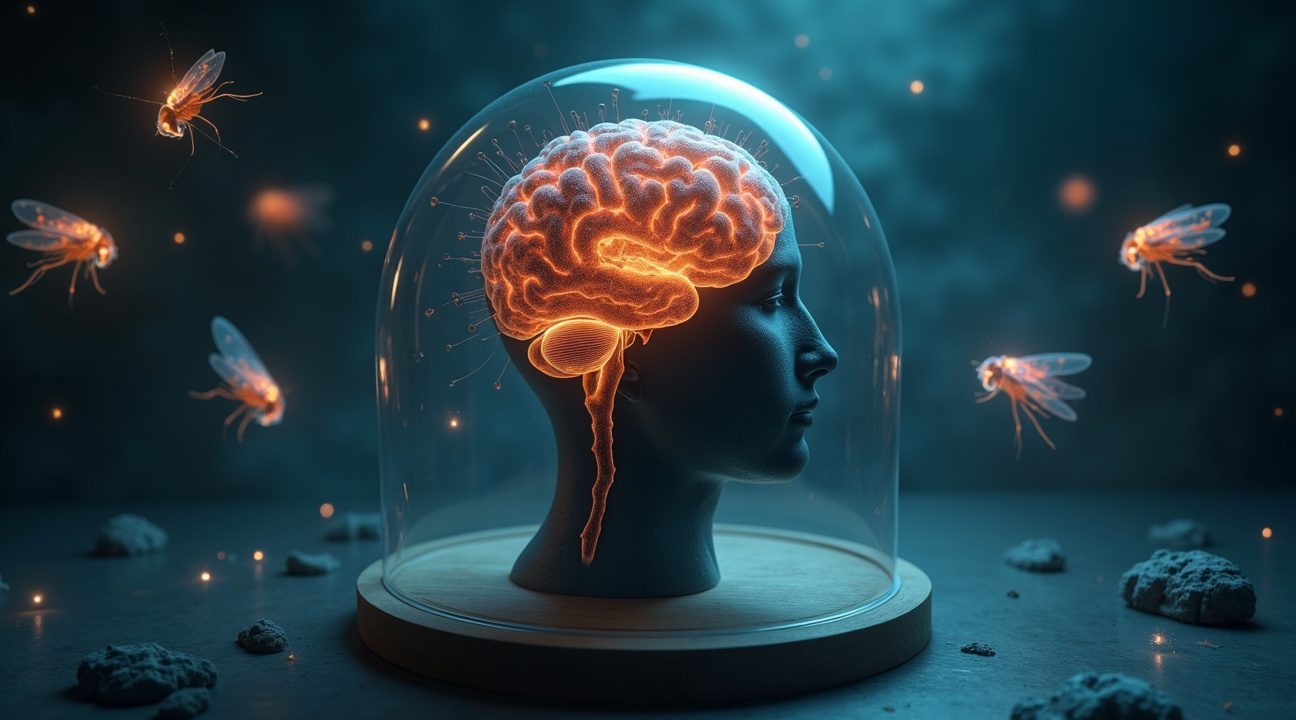
Three Promising Therapeutic Approaches Under Development
Japanese researchers have identified several innovative pathways that could revolutionize trauma treatment. These approaches focus on harnessing the brain’s natural healing mechanisms rather than suppressing symptoms.
Targeted Pharmacological Interventions
The first approach centers on medications that specifically stimulate neurogenesis following traumatic events. These drugs work by encouraging the brain to generate new neurons in regions affected by trauma, particularly the hippocampus where memory formation occurs. This approach is particularly compelling because it addresses trauma at the cellular level, giving the brain fresh neural pathways to process difficult experiences. The medications target specific growth factors that promote healthy brain cell development, potentially allowing traumatic memories to be reprocessed through newly formed neural networks.
Astrocyte-Modulating Interventions
The second therapeutic avenue involves drugs that influence astrocytes, the star-shaped brain cells that play crucial roles in memory consolidation. These interventions work during the critical window when memories transition from temporary to permanent storage. Scientists have discovered that memory formation processes can be influenced by modulating these supportive brain cells.
The approach offers several advantages:
- Direct intervention during memory consolidation prevents traumatic experiences from becoming deeply embedded
- Minimal disruption to existing healthy memories and cognitive function
- Potential for preventing PTSD development when administered shortly after trauma
- Reduced side effects compared to traditional psychiatric medications
Environmental and Light-Based Therapies
Environmental and light-based therapies represent the third promising direction in trauma treatment development. These non-invasive approaches use controlled light exposure and environmental modifications to influence circadian rhythms and neurotransmitter production. Light therapy has shown particular promise because it naturally regulates serotonin and melatonin levels, which directly impact mood and memory processing.
Environmental interventions might include:
- Specific sound frequencies
- Temperature adjustments
- Controlled sensory experiences that promote healing brain states
What makes these approaches groundbreaking is their focus on supporting the brain’s inherent capacity for recovery rather than masking symptoms. Unlike traditional treatments that often require long-term medication use, these interventions aim to create lasting changes in brain structure and function. The combination of pharmacological precision with natural healing processes offers hope for trauma survivors who haven’t responded well to conventional therapies.
Each approach targets different aspects of trauma’s impact on the brain, suggesting that future treatments might combine multiple methods for optimal results. The research continues to evolve, with scientists working to refine dosing protocols and identify the most effective treatment timing for maximum therapeutic benefit.
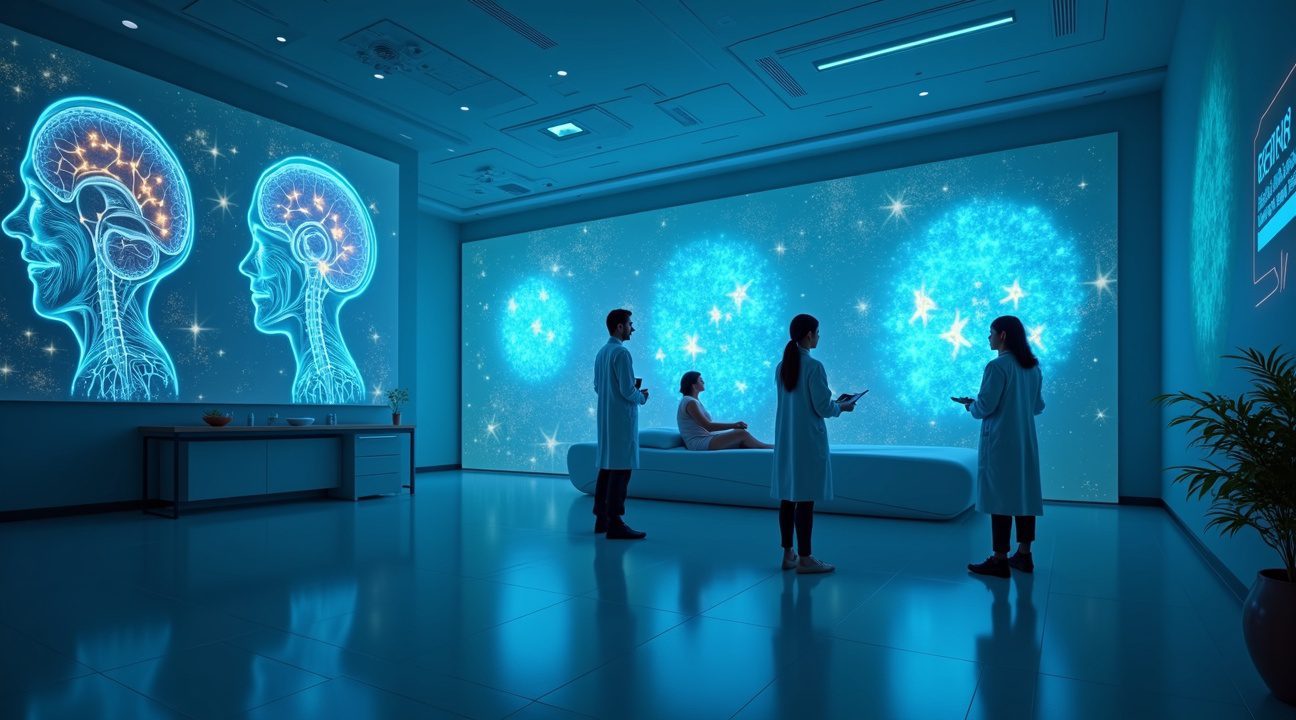
Challenges in Translating Animal Research to Human Treatments
Bringing this groundbreaking memory erasure technique from laboratory animals to human patients presents significant scientific and ethical hurdles. I’ve observed how many promising treatments perform brilliantly in mice and flies but fail to translate effectively to human applications, requiring years of careful clinical trials to establish both safety and efficacy.
Scientific and Technical Barriers
The most pressing challenge involves achieving precise memory targeting without causing collateral damage. Current research demonstrates that the technique works in controlled laboratory settings with specific traumatic memories in animals, but human memory networks operate with far greater complexity. Scientists must ensure that treatments selectively target traumatic experiences while preserving essential memories like learned skills, personal relationships, and basic cognitive functions.
Memory specificity poses another critical obstacle. Unlike the controlled laboratory conditions where researchers can create and then erase specific traumatic memories in test subjects, human trauma involves intricate neural pathways that interweave with numerous other memories and experiences. The risk of accidentally erasing beneficial memories or disrupting normal brain functions remains a significant concern that requires extensive testing and refinement.
Clinical trials will need to progress through multiple phases, starting with basic safety assessments and gradually moving to efficacy studies.
Each phase typically includes:
- Phase I: Safety testing in a small group of healthy volunteers
- Phase II: Therapeutic effectiveness in a larger patient group
- Phase III: Large-scale studies to confirm efficacy and monitor adverse reactions
- Phase IV: Ongoing monitoring after the treatment is approved
Each phase typically takes months or years to complete, meaning this treatment could be decades away from widespread availability. Researchers must establish optimal dosing, identify potential side effects, and determine which patients would benefit most from this intervention.
Scientists also face the challenge of measuring treatment success in humans. While laboratory studies can assess specific behavioral responses in animals, human trauma manifests differently across individuals, making it difficult to create standardized metrics for evaluating memory erasure effectiveness. The subjective nature of human experience adds layers of complexity that don’t exist in animal models.
Ethical and Social Considerations
Ethical considerations add another dimension to the translation process. Deliberately erasing memories raises profound questions about personal identity, autonomy, and informed consent. Some philosophers and ethicists argue that traumatic memories, while painful, contribute to individual identity and personal growth. The decision to erase these experiences must involve careful consideration of long-term psychological impacts.
Patient selection criteria present additional challenges. Researchers must determine which individuals would benefit from memory erasure without compromising their overall psychological well-being.
Factors to consider when selecting patients include:
- Severity and persistence of trauma-related symptoms
- Availability and success of existing therapies
- Presence of coping mechanisms or resilience factors
- The patient’s informed understanding of potential outcomes
Some trauma survivors develop resilience and coping mechanisms that help them process their experiences constructively. Erasing memories in these cases might actually hinder their recovery process.
The technology also needs refinement to work within human brain structures. Human neural networks differ significantly from those of mice and flies, requiring researchers to adapt their techniques accordingly. Brain imaging technology must advance to allow precise targeting of specific memory engrams without invasive procedures that could cause additional trauma or complications.
Regulatory approval processes will require extensive documentation of safety profiles and efficacy data. The FDA and other regulatory bodies maintain strict standards for treatments affecting brain function, particularly those involving memory manipulation. This scrutiny, while necessary for patient safety, extends the timeline for bringing treatments to market.
Long-term monitoring presents another challenge. Researchers must track patients for years or even decades to understand the full implications of memory erasure. Questions remain about whether erased memories might resurface, whether the brain develops compensatory mechanisms, or whether patients experience unexpected psychological effects over time.
The cost and accessibility of such treatments will also influence their practical application. Advanced neurotechnology typically requires specialized equipment and highly trained personnel, potentially limiting access to major medical centers. Scientists like those studying the cause of deja vu understand how complex brain functions require sophisticated research approaches that may not translate easily to widespread clinical use.
Despite these challenges, the potential benefits for trauma survivors drive continued research efforts. Success in addressing these obstacles could revolutionize treatment for PTSD, severe depression, and other trauma-related conditions, offering hope to millions of people suffering from debilitating memories that current therapies cannot adequately address.
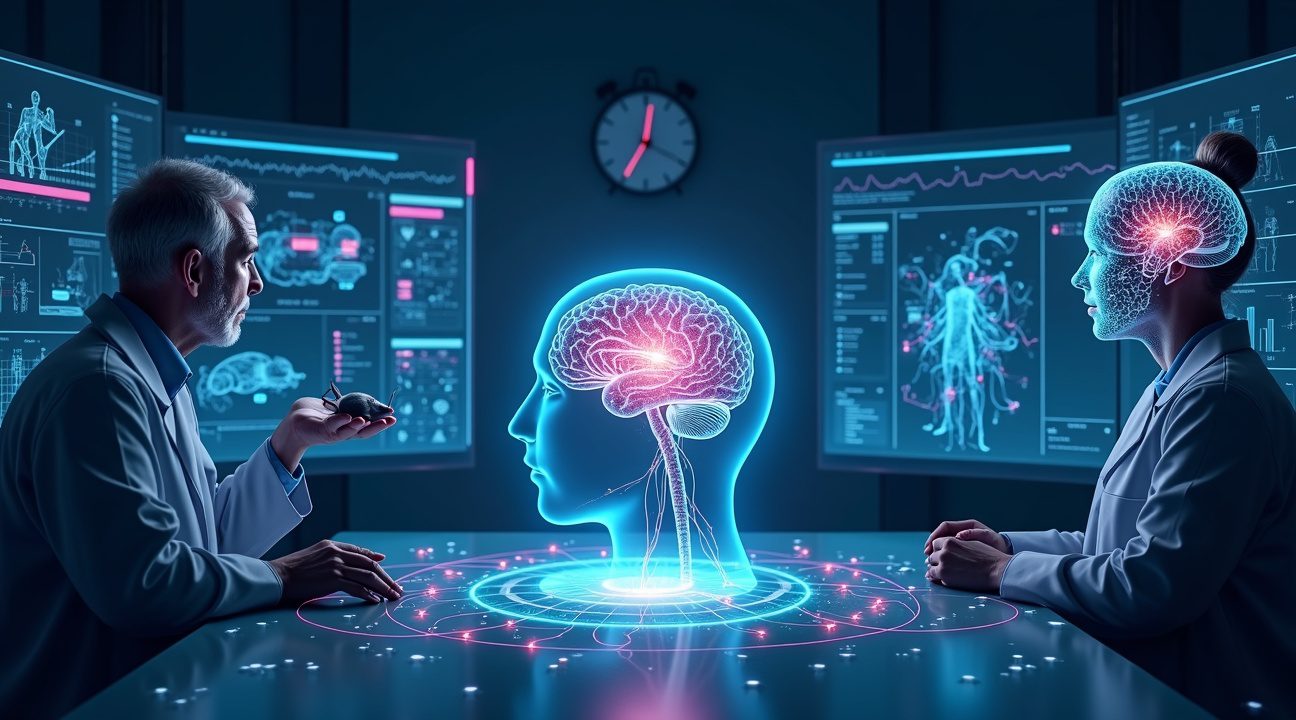
Sources:
“SciTechDaily, Kyushu University, University of Toronto – New Research Reveals That Exercise Can Rewire Brains and Erase Traumatic Memories”
“GLIA, Tohoku University – Astrocytic determinant of the fate of long-term memory (Authors: Hiroki Yamao, Ko Matsui)”
“Big Think, Tokyo Metropolitan University – Japanese scientists discover clue to erasing traumatic memories”

